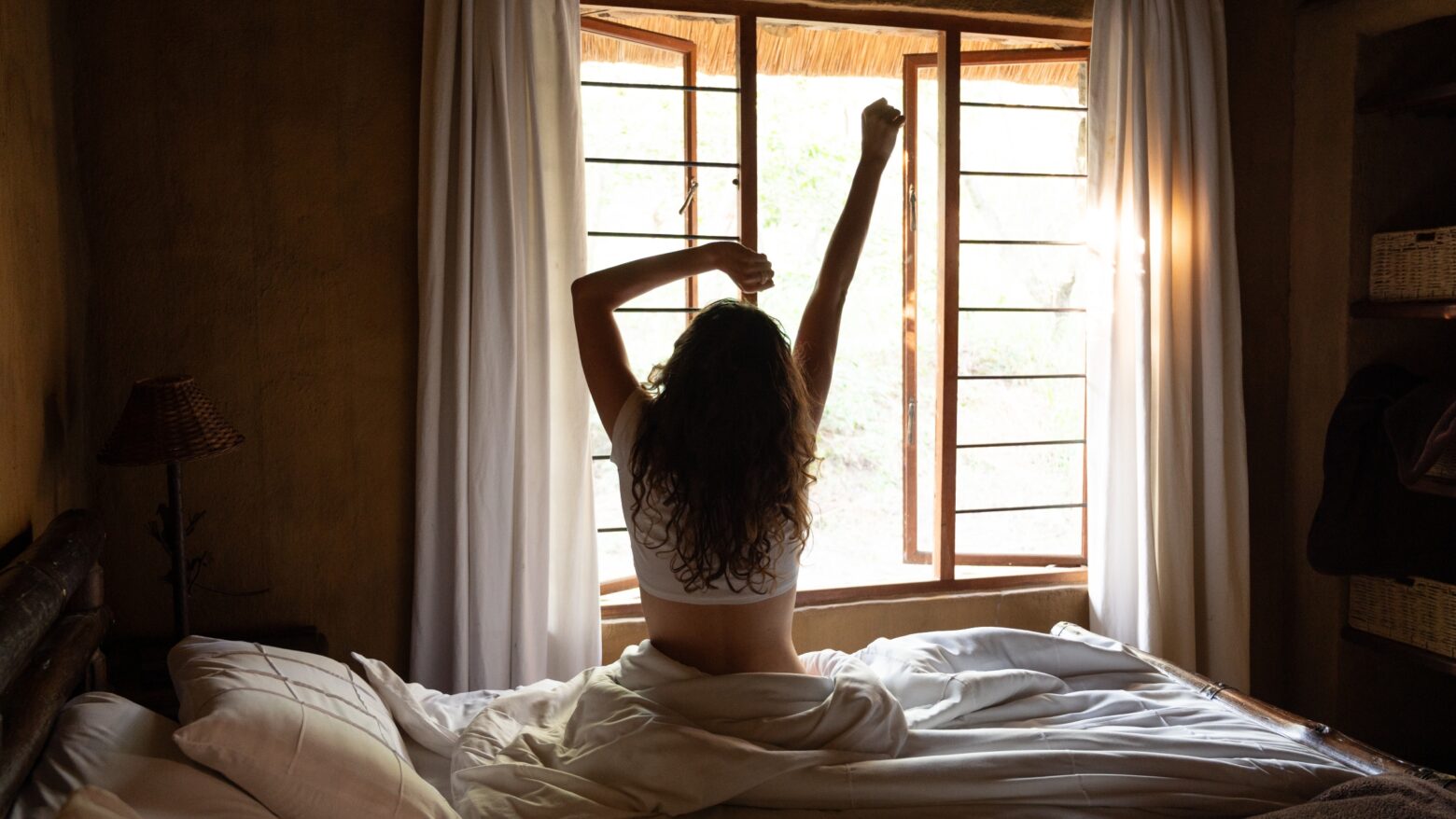Falling Back on Daylight Saving: Tips for Satisfying Sleep in Standard Time

Get ready for it: the adage that we gain an hour of sleep when we switch our clocks or fall back to standard time (ST) from spring’s daylight saving time (DST) is a misnomer. As much as we want to believe it, biologically, when you turn your clocks back an hour in the fall to ST, this is the time zone we should have been in all along. The seemingly harmless one-hour time shift in the spring is good for our social calendars but likely terrible for our health.
Standard time is solar time, which humans have lived by since recorded history. It’s linked to our bodies’ natural circadian rhythm and internal clock genes that regulate our sleep patterns.
In solar time, daylight is distributed equally before and after the sun reaches its highest point at noon. It’s the Goldilocks concept for sleep. Our natural sleep-wake cycles are meant to align with the sunrise when light prompts cortisol hormones to wake us up from our grogginess, and after sunset, nighttime hormones like melatonin rise to help us fall asleep.
Sleep experts from the American Academy of Sleep Medicine (AASM) have long argued that our bodies are meant to live on ST. [1] The organization petitioned Congress to remove DST, but to date, there has been no resolution.
The AASM cites a long list of health consequences from DST, including increased inflammatory markers, epigenetic changes to clock genes, and increased risk for cardiovascular and sleep disorders. However, they also share that “chronic effects of remaining in daylight saving time year-round have not been well studied,” and so it is possible that staying in DST may ameliorate these consequences.
RELATED: The Importance of Sleep for Your Immune System
Learning About Sleep from Hunter-Gatherer Tribes
Our internal sleep clock, the circadian rhythm gene, is programmed to shift our sleep patterns with the seasons. We should expect to sleep about an hour more in December than June.
How do we know this? By studying the last remaining hunter-gatherer communities in the world, researchers have learned a lot about how our bodies should sleep and how this should convince us to shed the distractions of modern society that get in the way of sound sleep.
UCLA scientists examined the natural sleep habits of the Hadza, hunter-gatherers living near the Serengeti National Park; the Tsimané, hunter-horticulturalists in the Andean foothills; and the San hunter-gatherers in the Kalahari Desert. [2] By measuring environmental and body change temperatures, light exposure, daytime lifestyle, and sleeping patterns, they found the following:
- People went to sleep about three hours and 20 minutes after sunset (a healthy bedtime for the rest of the world).
- Most slept for less than seven hours in the winter and an average of six hours in the summer and did not wake for long periods during the night.
- Naps were rare, and insomnia was nonexistent (they do not have a word for it).
- They woke naturally during the lowest outside temperatures in 24 hours, whether this was before or after daybreak.
- Tribal members spend significant time in the morning sunlight, which regulates the brain and body’s sleep clock and mood.
Morning Light, Sleep, and Better Mental Health
The research team leader, Jerome Siegel, Ph.D., and psychiatry professor at UCLA’s Semel Institute of Neuroscience and Human Behavior, said the findings validated what we know about sleep and health, including the biological benefits of spending time in morning light, the importance of a cool bedroom, and a consistent wake-up time.
Of the three findings, exposure to morning light is perhaps the least well-known. Often, our winter lifestyle is insular because of the weather. However, 30 minutes of morning sun exposure is critical for a better mood and good winter sleep.
Even for those with Seasonal Affective Disorder—a form of depression in the fall and winter caused by a lack of light—morning light from outdoors and sitting with a light box first thing in the morning can make a difference in resetting the body’s circadian rhythms. [3]
Preparing for the Shift Back to Standard Time
The sooner you can retrain your body away from DST patterns, the better. Before the clock shifts to standard time, do the following:
- Try to get as much exposure to morning sunlight after waking as possible—ideally at least 30 minutes. For instance, take a longer walk or run than usual in the morning, eat breakfast in the sunlight, or take a morning sun break outside.
- Three days before the time change, gradually shift your bedtime to 15 minutes earlier.
- On the night of the end of DST, stay up an hour later, but try to wake up at your normal time.
- Keep your bedroom cool throughout the night.
- Read from a book instead of an electronic device with a lighted screen in the evening.
- Dim the lights in your home as the sun sets and use a night light to move safely around if you wake up in the dark.
References
- Rishi MA, Ahmed O, Barrantes Perez JH, Berneking M, Dombrowsky J, Flynn-Evans EE, Santiago V, Sullivan SS, Upender R, Yuen K, Abbasi-Feinberg F, Aurora RN, Carden KA, Kirsch DB, Kristo DA, Malhotra RK, Martin JL, Olson EJ, Ramar K, Rosen CL, Rowley JA, Shelgikar AV, Gurubhagavatula I. Daylight saving time: an American Academy of Sleep Medicine position statement. J Clin Sleep Med. 2020 Oct 15;16(10):1781-1784. doi: 10.5664/jcsm.8780. PMID: 32844740; PMCID: PMC7954020.
- Yetish G, Kaplan H, Gurven M, et al. Natural sleep and its seasonal variations in three pre-industrial societies. Curr Biol. 2015;25(21):2862-2868. doi:10.1016/j.cub.2015.09.046
- Song C, Luchtman D, Kang Z, Tam EM, Yatham LN, Su KP, et al. Enhanced inflammatory and T-helper-1 type responses but suppressed lymphocyte proliferation in patients with seasonal affective disorder and treated by light therapy. Journal of Affective Disorders. 2015 Oct;185:90–6.
Kimberly Lord Stewart
Kimberly Lord Stewart is an author, journalist, and culinary expert. Her work highlights the importance of incorporating whole foods into daily diets and emphasizes the connection between food and overall well-being.
More About The Author




